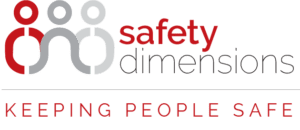
What is a risk management plan and how does this apply to disaster recovery?
In this post we look at implementing a comprehensive risk management plan and being prepared for both the physical and mental health risks of disaster recovery.
In the aftermath of natural disasters such as floods and storms, it is crucial that employers, workers, and volunteers involved in recovery efforts are aware of the potential hazards and risks and take necessary precautions to stay safe and ensure compliance with the Work Health and Safety Act 2011.
What is a risk management plan?
A risk management plan for disaster recovery is a document that outlines the steps and procedures that will be taken to identify, assess, and mitigate the risks associated with the recovery and clean-up process. The plan should include a detailed description of the hazards and risks associated with all tasks, as well as the strategies and measures that will be implemented to minimise the risks.
Elements of a risk management plan for disaster recovery include:
- Identification of the hazards and risks: This includes identifying the specific hazards and risks, such as exposure to hazardous materials, electrical safety, and mental health risks.
- Risk assessment: This involves evaluating the likelihood and potential impact of each identified hazard and risk.
- Risk control: This includes the development and implementation of strategies and measures to minimise or eliminate the identified hazards and risks, such as providing personal protective equipment and having the correct tools and equipment available, implementing safe work practices, access to first aid and medical treatment and providing emotional support to workers.
- Monitoring and review: What’s your plan for monitoring and reviewing the risk management plan to ensure that it remains effective and that any necessary changes are made?
Key hazards to include in a storm and flood recovery risk management plan include:
Electrical safety
Floods can pose a serious threat to electrical safety. When water comes into contact with electrical equipment or facilities, there is a risk of electrocution or fire.
To avoid these dangers, it’s essential to take preventative measures and steer clear of all electrical equipment that has been submerged in water including appliances and powerlines until they have been inspected, repaired and certified safe by a professional.
Electrocution can cause burns, cardiac arrest, death, and damage to property.
Asbestos
During the clean-up of flood-damaged buildings, asbestos-containing materials may be present. If these materials are damaged, tiny fibres can be released into the air, which can be harmful if inhaled and can cause diseases such as asbestosis, lung cancer, or mesothelioma.
Employers and workers should be mindful of the presence of potentially dangerous materials such as asbestos and other chemicals and use licenced asbestos removal specialists.
Chemical hazards
During storms and floods, hazardous chemical containers, including paints, pesticides, cleaners, and fuels, may spill, be buried, moved, or damaged. These chemicals can take the form of powders, solids, liquids, and gases and must be handled and disposed of safely.
To do this, it is important to:
- Identify the chemicals and their hazards by using labels and markings. If the container cannot be identified, seek expert advice.
- Avoid contact with unknown chemicals or chemical containers.
- Separate chemicals from general waste.
- Wear personal protective equipment, such as protective eyewear, chemical-resistant gloves, enclosed footwear, and a suitable respirator.
Fatigue
Fatigue is a common issue among those working during and after floods and storms. The physical and emotional demands of a natural disaster can take a toll on individuals and can significantly reduce their ability to work safely and effectively.
In order to minimise the risk of fatigue, employers have a duty to minimise the risk of fatigue and implement certain measures, such as:
- Rotating shifts: This allows volunteers to rest and recover between shifts, reducing the risk of fatigue.
- Providing regular and adequate rest breaks: Giving workers regular breaks during their shifts allows them to take a break and recharge, reducing the risk of fatigue and risk of injury.
- Providing a space for workers to rest before commuting home: This allows workers to rest and recuperate before going home, reducing the risk of fatigue when driving.
- Providing transportation (where possible): This reduces the risks associated with commuting, which can be tiring, particularly after a long day of work.
Mental health
Natural disasters can have a significant impact on the mental and emotional well-being of all those affected, including employees, recovery workers and volunteers. Employers should be aware that workers in post-disaster scenarios may have different types of stressors than in regular work, and may experience symptoms such as depression, irritability, anxiety, and insomnia caused by both physical exertions and emotional stress.
To minimise the impact on workers’ mental health, employers should:
- Consult with workers about changes to their roles and tasks.
- Set work targets and priorities with input and consultation from workers.
- Facilitate regular discussions about any additional pressures or challenges
- Provide rest areas for workers to take breaks.
- Ensure crisis and mental health support and assistance is readily available.
Overall, when employers and organisations plan ahead, assess potential hazards and risks, implement control measures and are vigilant in maintaining safety during recovery efforts, employers and workers can help prevent deaths, injuries and illnesses.
Key sources for more info:
Worksafe Queensland – Storms and floods
this page has important health and safety information about what to do before, during and after a natural disaster strikes.
https://www.worksafe.qld.gov.au/safety-and-prevention/hazards/workplace-hazards/dangers-in-your-workplace/storms-and-floods
Safe Work Australia – Managing the risks of working in hazardous weather
https://www.safeworkaustralia.gov.au/safety-topic/hazards/working-outside/working-hazardous-weather
NSW Government Safe Work – Floods and other natural disasters
https://www.safework.nsw.gov.au/resource-library/blogs/blogs-accordions/floods-and-other-natural-disasters







